Do I Need an Overlocker?
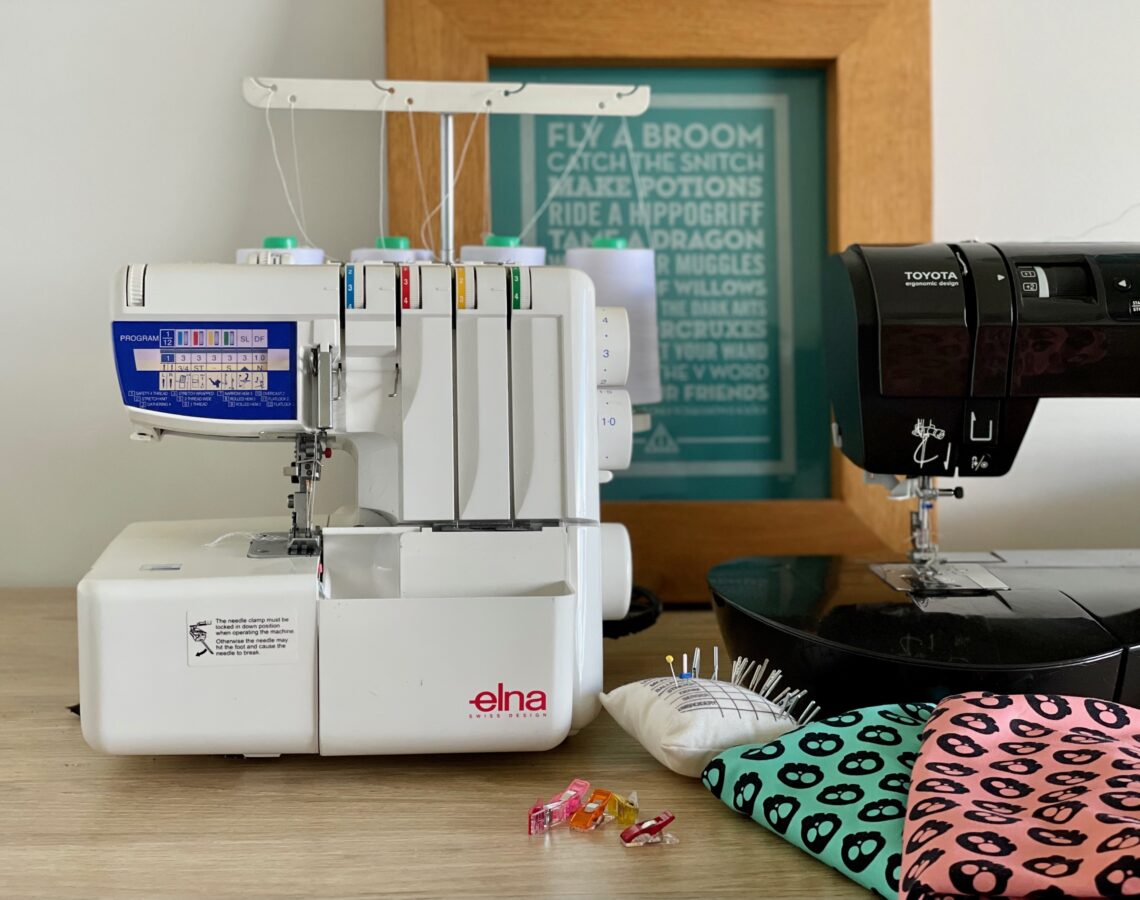
This is such a common question over in the Team Waves & Wild Facebook group; do I need an overlocker? The simple answer is…no, you don’t need an overlocker. But you might find one really useful!
Let’s have a look at exactly what an overlocker does, why one might be a useful addition to your sewing space and if there are any downsides too.
What is an overlocker?
An overlocker (or serger), is a type of sewing machine which primarily binds the edges of fabric or seams with a multi-thread chain stitch. The overlock stitch can join pieces of fabric and finish the edges at the same time. Or it can simply be used to neaten fabric edges giving a professional-looking finish. Unlike a traditional sewing machine, an overlocker has a cutting blade as well as needles. The blade trims the raw edges of fabric before sewing a chain stitch that, when using a four-thread setup, creates loops over the fabric edge (to stop fraying and to give a neat finish) and two parallel lines of a straight stretch stitch. On some models of overlockers the blade can be lowered so the cutting action doesn’t take place.
Although a traditional sewing machine can sewing a stitch that loops over the edge of fabric and a straight stitch, these have to done in two separate actions, and the edge finishing doesn’t give as “covered” a look. You can see the difference here. The turquoise woven fabric shows a sewing machine straight stitch with a zigzag stitch used to overlock the fabric edge, and other photo shows an overlocker chain stitch used on stretch fabric.
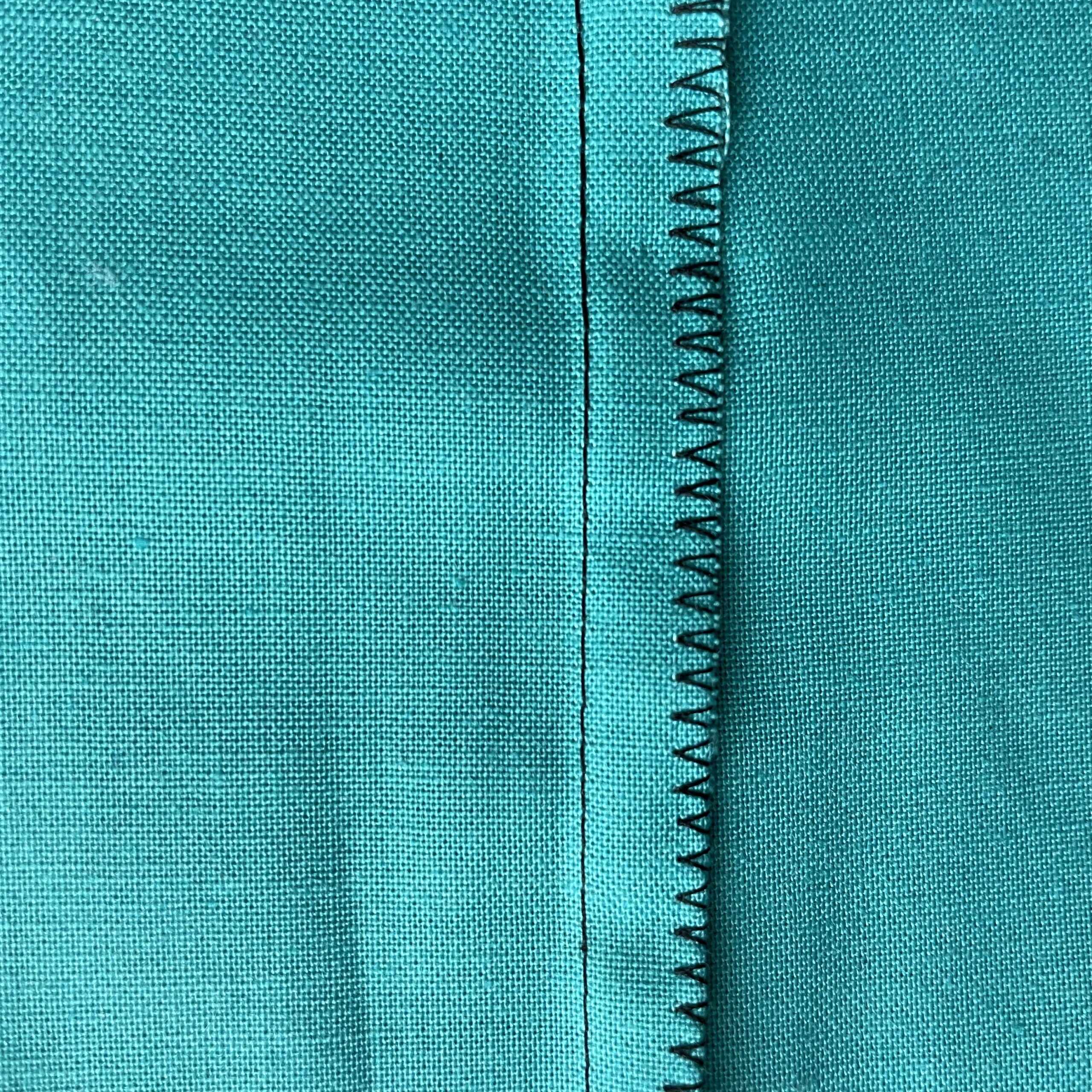
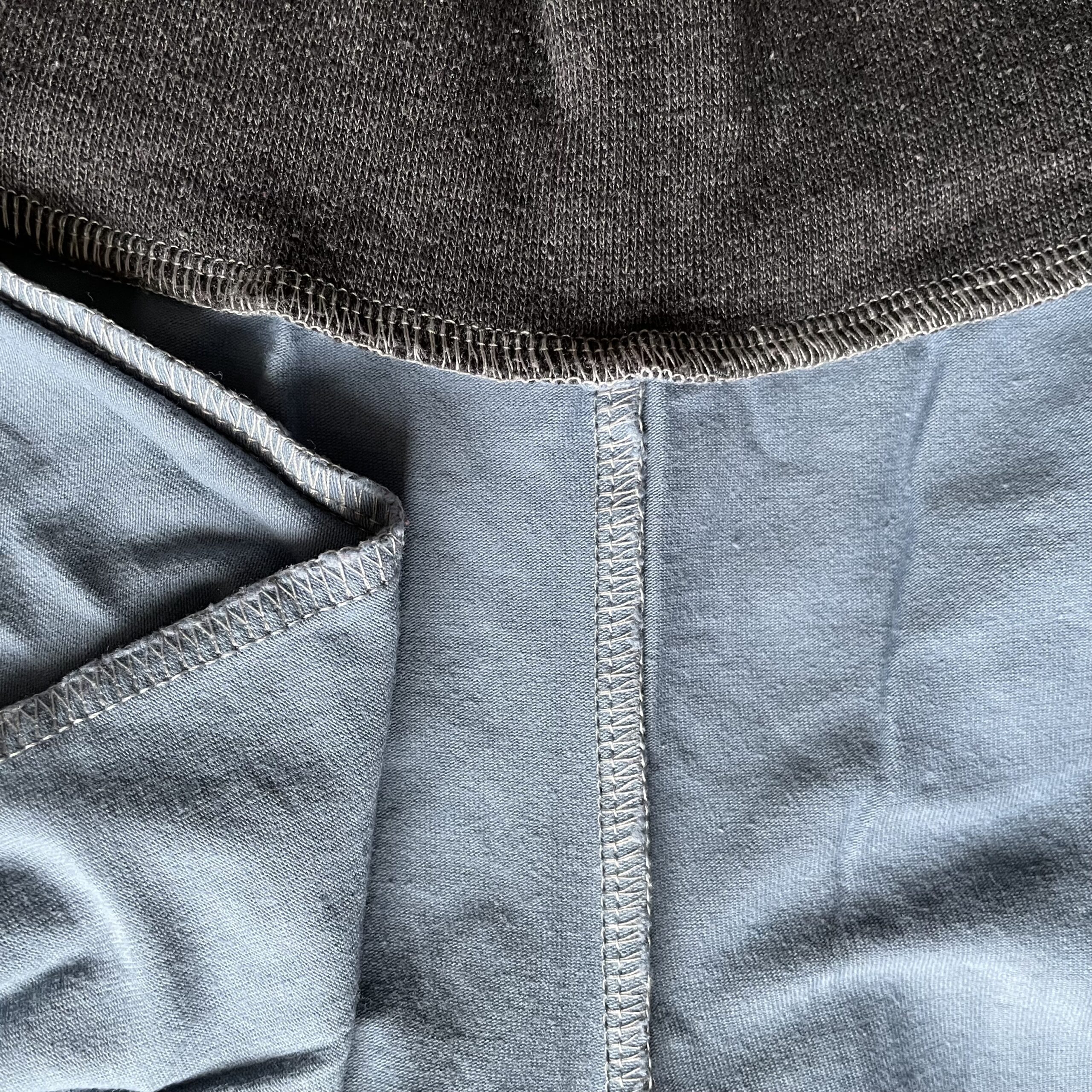
Although you could make some garments with just an overlocker, it’s important to note that an overlocker is great to use with a sewing machine.
What to do without an overlocker
What is really important to mention at this stage is that all Waves & Wild patterns can be made with a basic sewing machine. If you’re new to garment making, there is absolutely no need to rush out and buy a super fancy sewing machine and an overlocker. Of course you might want to do that at some point in the future but absolutely don’t need to!
Here are a few tips for making the best use of your sewing machine and getting a great finish:
-
Choose the correct stitch
For knits/stretch fabric you need a stitch that stretches too; try a zigzag stitch for the seams.
For woven fabric you’ll need to use a straight stitch; mostly likely the default stitch on your sewing machine is the one suitable for woven fabric seams. If you want to also neaten the raw woven edges and reduce the fabric fray, the addition of a zigzag stitch that overlaps the edge of your fabric works well. Always remember that you need the strength of the straight stitch for the actual seam. -
Add some “extras”
A walking foot is great for knit/stretch fabrics in general and also for any thicker seams. A walking foot helps to move the fabric under the sewing machine foot more easily, meaning stretch fabric is much less likely to stretch during sewing.
An overedge/overcast/overlocker foot is a great way to recreate something similar to the overlocker’s chain stitch effect on a sewing machine.
These may come with your sewing machine so always double check before buying anything new. It’s also important to check that you can add them to your particular sewing machine. And, again, you don’t have to have these but they could be really useful additions to make garment sewing easier and give you a neater finish. -
Needles
Using the right needle makes such a big difference to the finish of your garment. Universal for woven fabric and ball point/stretch for knit fabrics are both must-haves. For more details, there’s a blog post all about choosing the right needle for your project. Check it out here.
Why are overlockers useful?
So what’s so great about using an overlocker. Although you don’t need one they do have some excellent plus points.
Firstly they create a neat and professional finish inside your garments. An overlocker chain stitch really encloses your fabric edge because of the way the overlocker loops the thread around. It’s an effect that can be recreated on a sewing machine but not in exactly the same way. This overlocker chain stitch, especially when it’s added to a fabric edge that has just been neatly trimmed by the overlocker blade, stops the edge from fraying. This is really important with garments made of woven fabric. Even if they haven’t frayed during the making process, with wearing and washing the raw edge edge will start to fray at some stage. You can see a comparison in this photo show the difference in the denim seams on these jeans which have been overlocked or not.
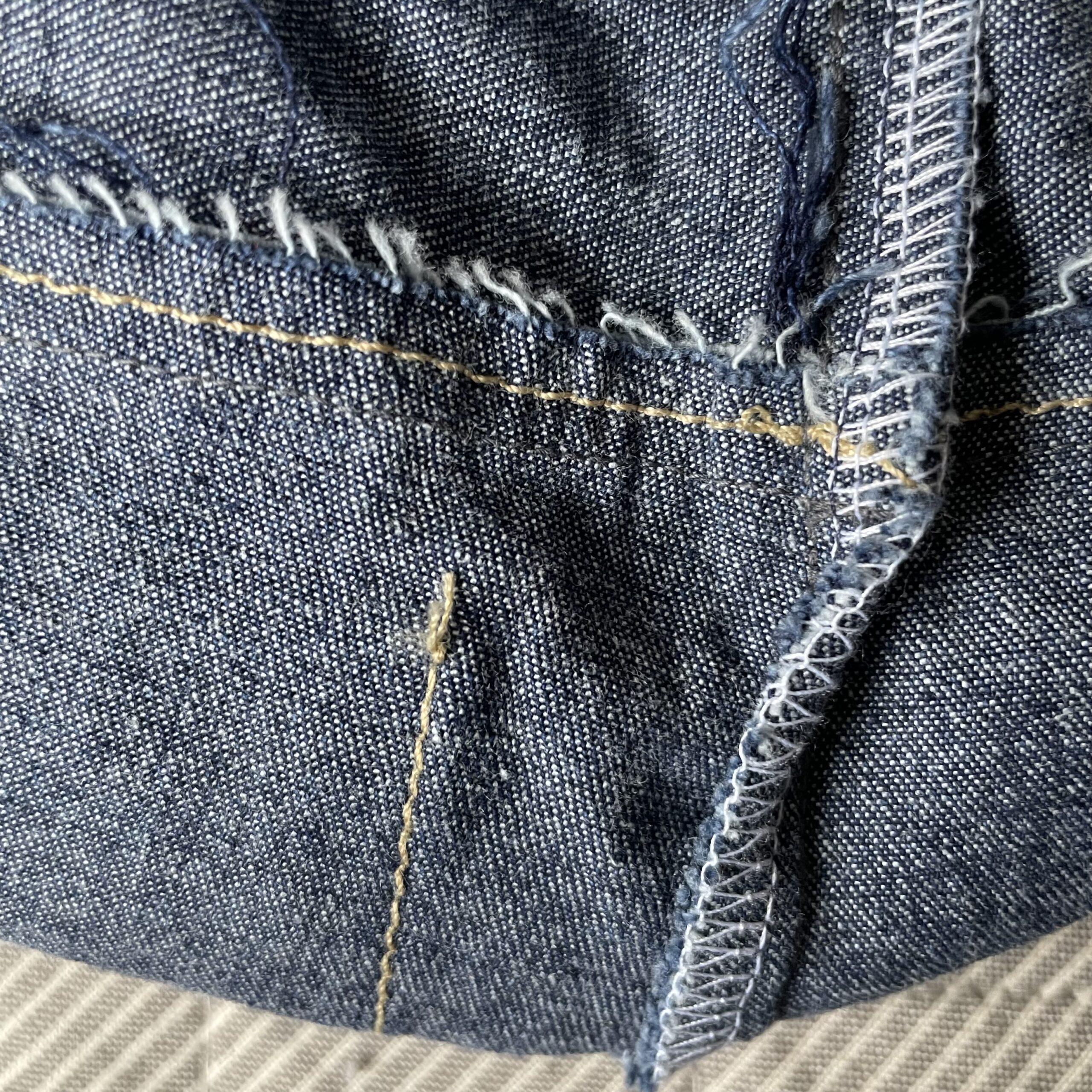
Overlockers are fast. This might not feel like a positive when you first try one; I certainly felt like the overlocker was in control rather than me on my first few goes! However, once you’ve got used to the speed you’ll really be able to whizz through quite a lot of the steps in garment making.
I’ve mentioned a few times that overlockers should very much be viewed as an additional machine to your traditional sewing machine so my last reason for why they are useful might seem a bit strange but stick with me. If you are using an overlocker there are lots of occasions when you can’t complete the garment without using your sewing machine too. This is especially true for any woven fabric garments as these can not be completed without a sewing machine. But there are some times when you can get away with only using your overlocker. As the overlocker chain stitch is a stretch stitch, it makes it perfect for knit/stretch fabric seams with no need to add a seam stitch too. If a knit fabric pattern, like hoodie or t-shirt, doesn’t need any sort of top stitching (e.g. hems, attaching pockets, finishing pockets etc) then you could make it only using your overlocker. I only mention this as a positive because sometimes getting out two different sewing machines can be a hassle. And if you love the finish and speed of the overlocker it is possible to make some simple garments without having to set up your tradition sewing machine too.
Are there any downsides to overlockers?
Like so many sewing tools, overlockers have some negative points too. I’ve said it before and I’ll say it again, overlockers are there to be used with a traditional sewing machine, not as an alternative. That gives you a downside right there; it is another machine to buy and store. Another really important thing to keep in mind is woven fabric patterns. The overlocker will give these garments a neat and professional finish whilst also stopping the fabric edges from fraying. However you have to use a traditional sewing machine to sew a straight stitch for the actual seams. Using only an overlocker on woven garments will not produce a strong enough seam and the seams will pop or the fabric will rip when the garment is worn. These corduroy dungarees have the overlocker chain stitch to neaten the fabric edge and stop fraying but you can see the sewing machine straight stitch above that; it’s this stitch which is securing the seam.
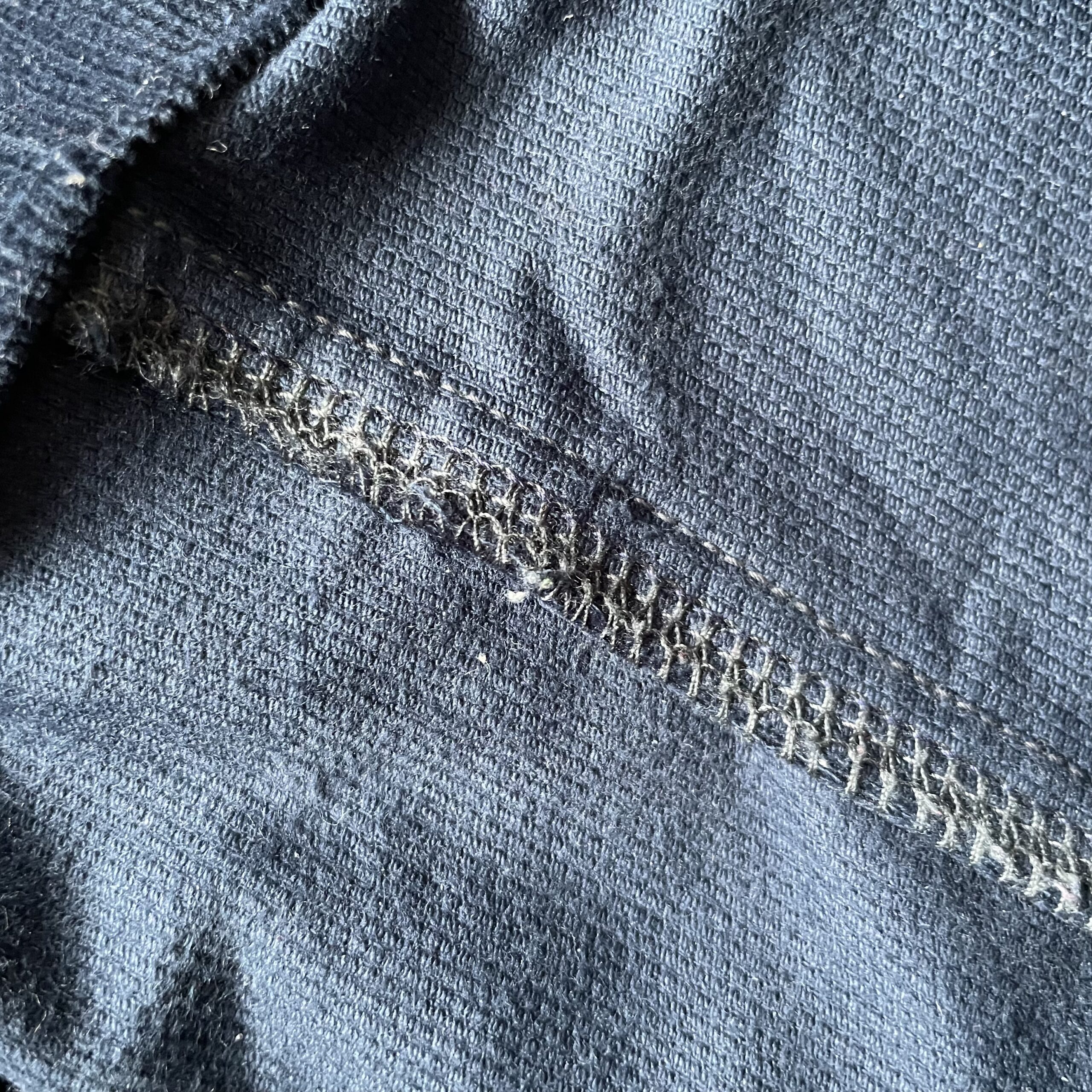
I’ve already mentioned that overlockers are fast and used this as a plus point. But I’m also including it as a negative too. The speed of an overlocker can feel intimidating if you are not used to it; there’s nothing worse than being scared to use an expensive sewing tool! They are also quite loud, certainly louder than a lot of traditional sewing machines. Depending on when and where you sew, a noisy machine might not work for you.
Finally, overlockers are kind of notorious for being hard work to set-up. Of course this will vary across brands and models, and the users too, but as the threads have to be passed through different areas inside the machine, threading can be a rather fiddly process. Sometimes it can feel like overlockers have a sixth sense. If you say to yourself “I’ll just change these thread colours and quickly finish off this t-shirt” you can guarantee that’s when you’ll have to re-thread it three times before the chain stitch actually chains. I’m kidding of course (well, sort of!) but you get the idea.
So, do you need an overlocker?
As I said at the beginning, the simple answer is…no, you don’t need an overlocker. However if you are looking for a way to sew knit/stretch fabrics in a more consistent way, or if you want to speed up some steps of your knit/stretch garment making, or if you want to improve the overall finish of your garments then it could be worth considering adding an overlocker to your sewing space. They vary quite a lot in price so I’d recommend doing some research to see if you get any extra features for more expensive models. If you have the chance to try some out, especially threading and re-threading, that could really help too.

I bought a necchi over locker last year and at first found it a little difficult to control,now I use it every chance I can. I would be lost without it now.
I have a Brother serger. I love it. It is easy to thread! I had a Singer serger which was a disaster. My biggest problem with the serger is curved edges on small pieces such as when making doll clothes the tops of sleeves tend to go off the fabric. I know it is operator error!